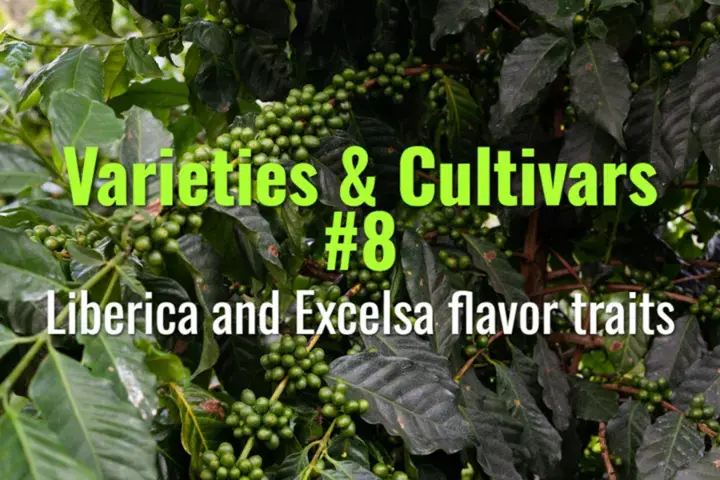Liberica and Excelsa flavor traits
This topic explores the unique flavor traits of Liberica and Excelsa coffee, their sensory profiles, and why they occupy a niche but important role in global coffee diversity.
- Coffee Basics Nerds
- 2 min read
Article 8 of 12 in Varieties & Cultivars/

Liberica
- Origin: Native to West Africa (notably Liberia), now cultivated mainly in Southeast Asia (Philippines, Malaysia, Indonesia).
- Bean traits: Large, asymmetrical beans and elongated cherries.
- Flavor profile:
- Bold, smoky, woody, and floral notes.
- Sometimes described as jackfruit-like or with a lingering aftertaste.
- Heavy body, low acidity.
- Market role: Very small global share (<2%) but valued locally in Southeast Asian markets.
- Cultural note: In the Philippines, Liberica is called Barako and carries cultural pride.
Excelsa
- Classification: Once considered a separate species, now regarded as a variety of Liberica.
- Cultivation: Grown mainly in Southeast Asia, especially around Lake Toba (Indonesia) and the Philippines.
- Flavor profile:
- Distinctly tart and fruity, with wine-like or berry notes.
- Adds complexity and brightness when blended.
- Medium body, higher acidity compared to Liberica.
- Market role: Rarely exported alone but gaining attention in specialty markets for unique cup profiles.
Comparative Flavor Traits
- Liberica: Heavy-bodied, smoky, sometimes polarizing due to unusual fruity/woody mix.
- Excelsa: Bright, tart, fruity, often used to enhance blends with complexity.
- Arabica vs Robusta vs Liberica/Excelsa:
- Arabica: Sweet, floral, nuanced.
- Robusta: Strong, bitter, earthy.
- Liberica: Bold, smoky, fruity-woody.
- Excelsa: Tart, winey, exotic.
Specialty and Niche Value
- Growing interest from adventurous specialty roasters.
- Opportunities to showcase regional diversity in coffee beyond Arabica and Robusta.
- May play a future role in flavor innovation and biodiversity preservation.
Lasting Importance
Liberica and Excelsa remind us that coffee’s diversity extends far beyond Arabica and Robusta. Their distinctive flavor traits—whether smoky-bold or tart-fruity—contribute to cultural identity and broaden the sensory horizons of coffee lovers worldwide.